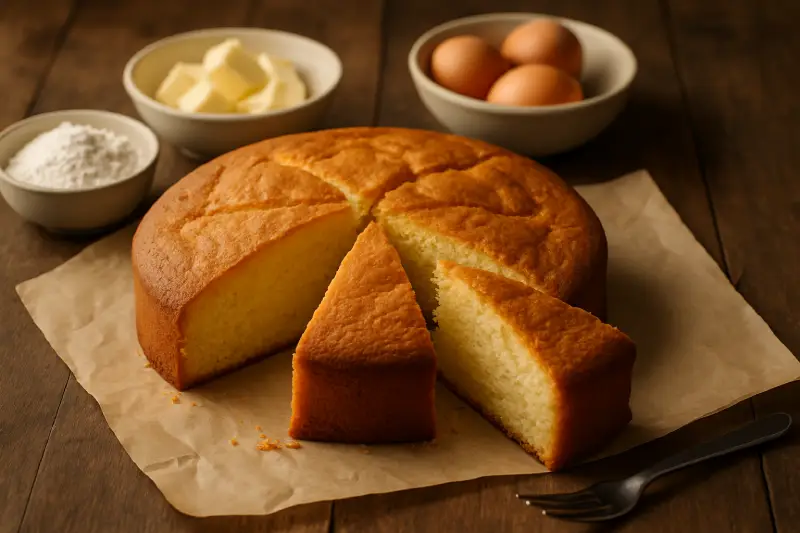A soft, airy cake isn’t just about flavor—it’s a sign of baking mastery. Whether you’re preparing a birthday cake, a layered wedding dessert, or a simple tea-time treat, achieving a fluffy texture can make all the difference.
If your cakes often turn out too dense, dry, or flat, you’re not alone. Many home bakers struggle with getting the softness just right.
The good news is: professional-quality cakes are within your reach. Here are 10 foolproof tips used by pastry chefs and experienced bakers to ensure your cakes come out deliciously soft every time.
1. Use Ingredients at Room Temperature
One of the most common mistakes is baking with cold ingredients. Cold butter doesn’t cream properly with sugar, and cold eggs don’t mix evenly with batter. Room temperature ingredients emulsify better, which leads to a smoother batter and a softer, more tender cake.
How to do it:
-
Take butter, milk, and eggs out of the fridge 30–60 minutes before baking.
-
If you’re short on time, soak eggs in warm (not hot) water for a few minutes and gently microwave milk or butter for 10–15 seconds.
2. Cream Butter and Sugar Thoroughly
Creaming is more than just mixing—it’s aerating. By beating butter and sugar together until light and fluffy, you’re introducing tiny air pockets into the batter. These air pockets expand in the oven, giving your cake a light texture.
Pro Tip:
Use an electric mixer on medium speed for 3 to 5 minutes for perfect creaming. The butter should visibly lighten in color.
3. Measure Ingredients Precisely
Baking is a science. Unlike cooking, a small measurement error can ruin the texture of your cake. Use digital kitchen scales instead of measuring cups for dry ingredients, and level off every spoonful when using measuring spoons.
Especially important:
-
Too much flour = dense cake
-
Too little fat = dry cake
-
Incorrect ratio = unbalanced structure
4. Sift the Dry Ingredients
Sifting isn’t just for removing lumps—it’s also a way to aerate the dry components. This results in a lighter batter and better incorporation when you mix it with the wet ingredients.
Sift flour, cocoa powder, baking soda, and baking powder before combining with the wet mixture.
5. Don’t Overmix the Batter
Overmixing develops gluten in the flour, which is great for bread but disastrous for cake. Once your flour is in, stir just until the batter is smooth and the dry ingredients disappear.
Rule of thumb:
Mix on low speed or by hand for better control. Stop as soon as the flour is no longer visible.
6. Use Cake Flour Instead of All-Purpose Flour
Cake flour has a lower protein content (around 7–8%) compared to all-purpose flour (10–12%). Less protein means less gluten, which results in a finer, more delicate crumb—ideal for soft cakes.
Substitution:
If you don’t have cake flour, use this simple hack:
1 cup all-purpose flour – 2 tablespoons + 2 tablespoons cornstarch = 1 cup cake flour substitute
7. Add Moisture-Boosting Ingredients
Moisture is key to softness. Ingredients like sour cream, buttermilk, or yogurt add richness and keep your cake tender for days.
They also react with baking soda or baking powder to produce a better rise, enhancing softness from inside out.
8. Don’t Overbake
Even 5 minutes too long in the oven can dry out your cake. Every oven is different, so always test early.
How to check:
-
Insert a toothpick into the center; it should come out with a few crumbs, not clean or wet.
-
Gently press the top of the cake—if it springs back, it’s ready.
-
Set timers 5 minutes before the end of the suggested baking time.
9. Use the Right Oven Temperature
An oven that’s too hot can cause the cake to rise too quickly and collapse. Too cold, and your cake will be dense. Use an oven thermometer to verify your oven is baking at the temperature you set.
Golden range:
Most cakes bake best at 325°F to 350°F (160°C to 175°C).
10. Let the Cake Rest After Baking
Once out of the oven, let your cake sit in the pan for 10 to 15 minutes before turning it out onto a wire rack. This helps it set properly and prevents it from breaking apart or getting soggy.
After that:
Allow the cake to cool completely before frosting or cutting. Cutting too early causes steam to escape and can dry out the cake.
Bonus Tips for Even Softer Results
If you want to go even further, here are some professional hacks to level up your softness game:
-
Simple syrup soak: Lightly brush your cake layers with simple syrup after baking. This keeps them moist for longer.
-
Cover with plastic wrap while warm: Lock in moisture by covering the cake (still in the pan) with plastic wrap as it cools.
-
Don’t refrigerate unless needed: Fridges dry out cakes. Only chill them if the filling or frosting requires it.
Final Thoughts: Soft Cakes, Happy Guests
Getting your cakes to turn out soft, moist, and fluffy doesn’t require a culinary degree—just the right technique and attention to detail. With these 10 foolproof tips, you’ll be well on your way to baking cakes that impress everyone who takes a bite.
Remember, baking is a craft. The more you practice, the better your results. Start applying these strategies today and experience the difference in your next bake!

